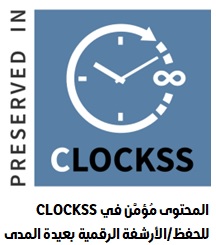Revisiting Retranslation Hypothesis: A Comparative Analysis of Stylistic Features in two Arabic Retranslations of the “Old Man and the Sea”
DOI:
https://doi.org/10.63939/AJTS.kyqqfh62الكلمات المفتاحية:
Retranslation Hypothesis، Comparative Analysis، Arabic Retranslations، Old Man and the Seaالملخص
TS is an interdisciplinary field connected to many sub-disciplines, which resulted in emersion of many issues among TS scholars and researchers. One of the most important and controversial issue at the same time is the phenomenon of Retranslation. Although this phenomenon is considered as a positive one, the motives behind it is multi and debatable. The simplicity of the novel “The Old Man and The Sea” written by American author Ernest Hemingway attracted many translators in the Arab world, so it has been translated into Arabic many times.
Since empirical evidence of various case studies from and to different languages is needed within the scope of translation studies regarding Retranslation phenomenon, this study aims to revisit the hypothesis with focusing on retranslation of novels. In addition, researches revealed that the first two translations of the novel are more target-oriented and they didn’t focus on the style of the author. This study aims to test the validity of “Retranslation Hypothesis” in the novel later retranslations, which are supposed to be more source-oriented according to RH from stylistic point of view. A comparative textual analysis of stylistic features between the source and the two of the subsequent Arabic retranslations was carried out to reveal the degree of closeness to the original style of the author and unveil the implications behind the differences between both retranslations.
التنزيلات
التنزيلات
منشور
إصدار
القسم
الرخصة

هذا العمل مرخص بموجب Creative Commons Attribution-NonCommercial 4.0 International License.
يتأطرُ نَشَاطَا النشر والتوزيع الخَاصَّيْنِ بمقالات المجلة برخصة المشاع الإبداعي اللاتجارية والحافظة للنسب CC BY-NC 4.0، والتي تنص على الآتي:
- لك كقارئ أو زائر مُطْلَقُ الحرية في:
- المشاركة: نسخ وتوزيع ونقل العمل لأي مكان أو تحويله لأي شكل.
- التعديل:المزج، التحويل، والإضافة على العمل.
لا يمكن لنا كجهة مُرَخِّصَة إلغاء هذه الصلاحيات طالما اتبعتَ شروط الرخصة.
- يتوجب عليك في المقابل احترام الشروط التالية:
- نَسب المُصنَّف (المقالة):يجب عليك نَسب العمل لصاحبه بطريقة مناسبة، وتوفير رابط للترخيص، وبيانُ إذا ما قد أُجريت أي تعديلات على العمل. يُمْكِنُكَ القيام بهذا بأي طريقة مناسبة، ولكن على ألا يتم ذلك بطريقة توحي بأن المُؤَلِّف أو المُرَخِّص مُؤَيِّد لك أو لعملك.
- غير تجاري:لا يمكنك استخدام هذا العمل لأغراض تجارية.
- منع القيود الإضافية: يجب عليك ألا تُطَبِّقَ أي شروط قانونية أو تدابير تكنولوجية تقيد الآخرين من ممارسة الصلاحيات التي تَسْمَحُ بها الرخصة.












